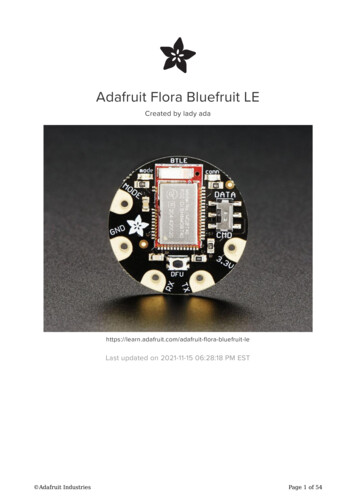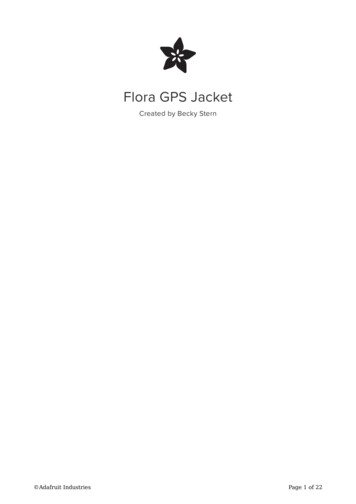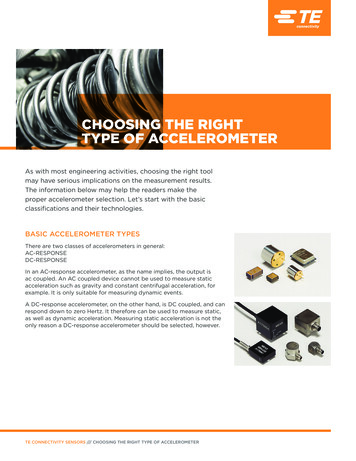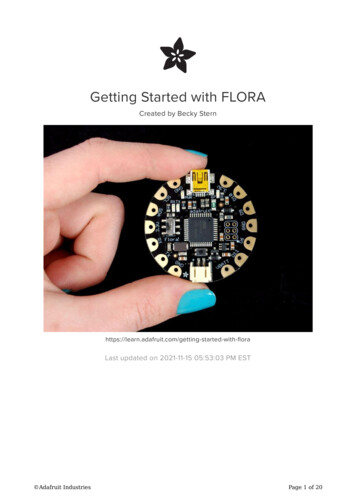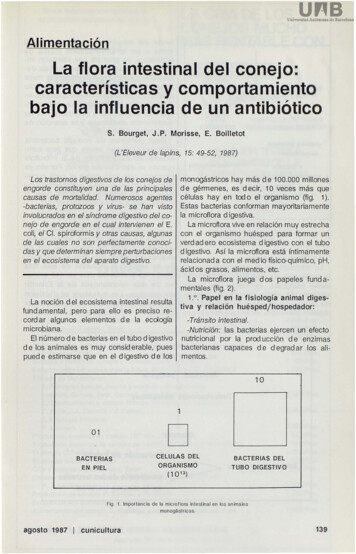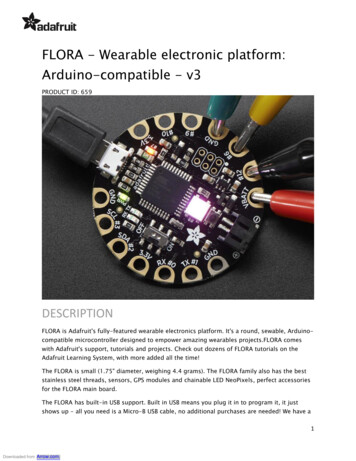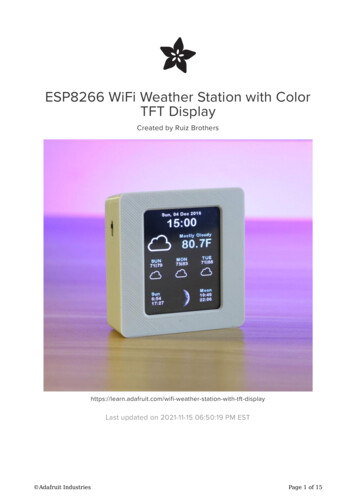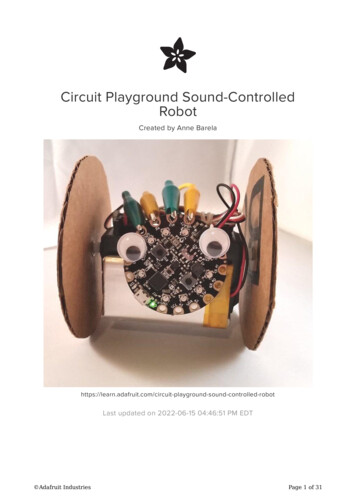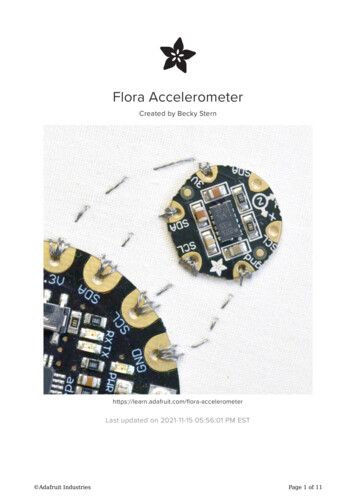
Transcription
Flora AccelerometerCreated by Becky rLast updated on 2021-11-15 05:56:01 PM EST Adafruit IndustriesPage 1 of 11
Table of ContentsOverview3Wiring with Conductive Thread4Programming8Downloads Files Schematic Fabrication Print Adafruit Industries10101111Page 2 of 11
OverviewAdd motion and direction sensing to your wearable Flora project with this highprecision 3-axis Accelerometer Compass sensor. Inside are two sensors, one is aclassic 3-axis accelerometer, which can tell you which direction is down towards theEarth (by measuring gravity) or how fast the board is accelerating in 3D space. Theother is a magnetometer that can sense where the strongest magnetic force iscoming from, generally used to detect magnetic north. By combining this data you canthen orient yourself.We based this sensor on the latest version of this popular sensor, the LSM303DLHC.The sensor has a digital (I2C) interface. Attaching it to the Flora is simple: line up thesensor so its adjacent to the SDA/SCL pins and sew conductive thread from the 3V,SDA, SCL and GND pins. They line up perfectly so you will not have any crossed lines.You can only connect one of these sensors to your Flora, but you can connect otherI2C sensors/outputs by using the set of SCL/SDA pins on the opposite side.To get started making a soft accelerometer circuit on fabric you will need: Flora main board (http://adafru.it/659) Flora accelerometer (http://adafru.it/1247) Conductive thread (http://adafru.it/640) (2 or 3 ply) Fabric inside an embroidery hoop USB A/MiniB cable (http://adafru.it/260) 3xAAA battery holder (http://adafru.it/727) Adafruit IndustriesPage 3 of 11
Wiring with Conductive ThreadBring your needle through the back ofthe fabric to the front next to the GNDpad on your Flora. Leave a the last fewinches as a tail on the back side of thefabric.Stitch a few times around the GND padand end on the back side of the fabric.Tie the tail and the working thread into asquare knot, tight against the fabric. Adafruit IndustriesPage 4 of 11
Dab a little Fray Check or clear nail polishon the knot while holding it tight. This willprevent the knot from coming undoneand creating unwanted shorts in yourcircuit. Trim the tail very close to the knot. Adafruit IndustriesPage 5 of 11
Stitch a path over to the gnd pad on theFlora accelerometer. When you get there,stitch a few times around the sensor'sgnd pad. Adafruit IndustriesPage 6 of 11
On the back side of the fabric, slip theneedle through the previous stitches andthen back through the resulting loop totie a knot tight to the fabric. Dab on yoursealant and trim closely. Adafruit IndustriesPage 7 of 11
Repeat this process to make the other three required connections to theaccelerometer - 3.3v, SCL, and SDA. This is the i2c bus on the Flora, and you canchain more sensors (http://adafru.it/1246) (or LED matrix backpacks (https://adafru.it/aQg)) to this first one by connecting to the as-of-now unconnected SDA and SCL pins.i2c is great for this application because you can connect many devices to each otherwithout using up all the pins on the Flora.ProgrammingPlug in a USB cable connecting your Flora to your computer.Download the Adafruit LSM303 (https://adafru.it/aXz) library from the Arduino LibraryManager.Open up the Arduino Library Manager: Adafruit IndustriesPage 8 of 11
Search for the Adafruit LSM303 library and install itFor information how to use and install libraries, see our tutorial (https://adafru.it/aYG)!Open the special Adafruit version of the Arduino IDE and naviate to File-- Examples- Adafruit LSM303-- Test to open the accelerometer test sketch. For more informationon programming the Flora, check out the Getting Started with FLORA (https://adafru.it/aSZ) guide.Be sure you have the correct serial port and board type selected under the Toolsmenu, then upload the sketch to your Flora.Open the serial monitor and watch the accelerometer values pour in! Adafruit IndustriesPage 9 of 11
Modify this sample sketch to integrate this sensor into your project. Debugging overUSB is helpful to see the ranges of numbers your sensor provides, but once yourcode is solid, you can disconnect from the computer and power your project with a3xAAA battery holder.DownloadsFiles LSM303DLHC datasheet (https://adafru.it/rgd) Adafruit LSM303 Arduino Driver Library (https://adafru.it/aXz) Fritzing object in the Adafruit Fritzing Library (https://adafru.it/aP3) EagleCAD PCB files on GitHub (https://adafru.it/rEe) Adafruit IndustriesPage 10 of 11
SchematicFabrication Print Adafruit IndustriesPage 11 of 11
Open the special Adafruit version of the Arduino IDE and naviate to File-- Examples-- Adafruit_LSM303-- Test to open the accelerometer test sketch. For more information on programming the Flora, check out the Getting Started with FLORA (https://adafru.it /aSZ) guide. Be sure you have the correct serial port and board type selected under the Tools
